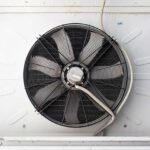Understanding Indoor Air Quality
One of the most straightforward ways to tackle these airborne contaminants is through regular cleaning with a high-quality vacuum cleaner that features proper filtration, creating a noticeably healthier living environment for you and your family.
What Is Indoor Air Quality?
Indoor air quality (IAQ) describes how clean and healthy the air is within buildings and enclosed spaces. It’s determined by several factors: the presence or absence of pollutants, humidity levels, and how well air circulates throughout the space. The list of common indoor air pollutants might surprise you—dust mites lurking in bedding, pet dander floating invisibly through rooms, mold spores thriving in damp corners, volatile organic compounds (VOCs) released by everything from cleaning products to new furniture, fine particles kicked up during cooking and cleaning, and various microorganisms that can wreak havoc on sensitive respiratory systems.
These contaminants tend to build up in our homes because indoor air doesn’t circulate as freely as outdoor air. Soft furnishings like carpets, curtains, and upholstered furniture act like magnets for particles, while our daily activities constantly stir up settled dust and debris.
Health Effects of Poor Indoor Air
When indoor air quality suffers, our bodies often respond immediately. You might notice allergic reactions flaring up, eyes becoming irritated, headaches developing seemingly out of nowhere, or asthma symptoms worsening. But the effects don’t stop there—prolonged exposure to indoor pollutants can lead to chronic respiratory health problems, make you more susceptible to infections, and leave you feeling persistently tired.
Here’s a sobering fact from the Environmental Protection Agency (EPA): indoor air can be two to five times more polluted than the air outside. That makes the quality of your home’s air a surprisingly critical factor in your overall health. Airborne particles smaller than 10 micrometers are particularly concerning because they can penetrate deep into lung tissue, while larger particles tend to irritate your upper respiratory system.
Sources of Indoor Pollutants
Everyday Activities and Household Items
You might not realize it, but simple daily activities like cooking dinner, walking across your living room carpet, or even getting a good night’s sleep can release particles into the air around you. Soft furnishings—think upholstered chairs, heavy curtains, and cozy bedding—serve as collection points for dust mites, dead skin cells, and other allergens that accumulate over time. Research reveals that household dust is actually a complex cocktail of organic matter, including tiny insect fragments, fabric fibers, and microbial content that gets stirred up and becomes airborne whenever we clean or move around.
The Role of Cleaning Devices
Here’s an ironic twist: the very devices we use to clean our homes can sometimes make indoor air quality temporarily worse. While cleaning equipment certainly helps remove pollutants, it can also redistribute fine particles back into the air if it lacks proper filtration systems. Studies have shown that vacuum cleaners without HEPA filters may actually increase the concentration of airborne particles during use, temporarily making indoor air quality worse rather than better. This underscores why choosing the right cleaning equipment—tools that capture contaminants rather than just moving them around—makes such a difference.
Fine particle emissions from inadequate cleaning devices can linger in the air for hours afterward, potentially triggering respiratory irritation in anyone with sensitive airways.
Practical Steps to Improve Indoor Air Quality
Regular Cleaning and Maintenance
Building a consistent cleaning routine is your first line of defense against poor indoor air quality. Here are the essential practices that make the biggest difference:
- Vacuum carpets and area rugs weekly using equipment with HEPA filtration
- Wash all bedding in hot water weekly to eliminate dust mites effectively
- Dust hard surfaces using microfiber cloths that actually trap particles instead of just pushing them around
- Replace or clean filters in all household devices on schedule
- Give upholstered furniture a thorough vacuuming monthly
Ventilation and Air Purification
Proper ventilation works wonders for diluting indoor pollutants and bringing fresh outdoor air into your living space. When weather allows, open windows to create cross-breezes. Run exhaust fans while cooking and showering, and consider installing mechanical ventilation systems in areas where natural airflow is limited.
Air purifiers with HEPA filtration can work alongside your cleaning efforts by continuously filtering airborne particles from the air. These devices perform best in rooms where you can control air circulation—typically smaller, more enclosed spaces.
Reducing Sources of Pollution
Prevention is often easier than cleanup. You can minimize new pollutants by making thoughtful choices about household products. Look for cleaning agents, paints, and furnishings labeled as low-VOC or no-VOC. Skip synthetic air fresheners and aerosol products, which can release harmful chemicals that linger in indoor air long after you’ve used them.
Environmental Considerations
Energy-efficient cleaning practices offer a double benefit—they improve your indoor air quality while supporting environmental sustainability. Keeping your cleaning equipment well-maintained extends its lifespan and ensures it continues performing at its best while using less energy. When possible, consider repairing functional devices rather than replacing them, and look for energy-efficient models when replacement becomes necessary.
Key Takeaway
Creating and maintaining excellent indoor air quality isn’t about one dramatic change—it’s about combining several effective strategies. Regular cleaning with HEPA-filtered equipment, ensuring adequate ventilation, and making thoughtful choices about household products all work together to create meaningful improvements. The beauty lies in how small, consistent efforts in your daily cleaning routine can yield significant benefits for long-term respiratory health and overall comfort.
By putting these evidence-based strategies into practice, you can transform your home into a healthier indoor environment that supports your family’s well-being while keeping your environmental impact in check through sustainable cleaning habits.






Leave a Reply